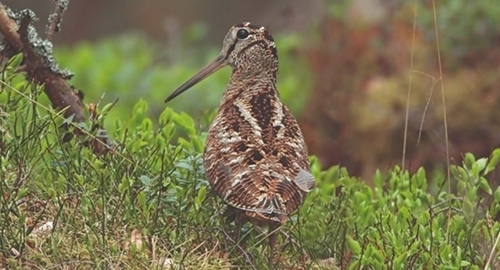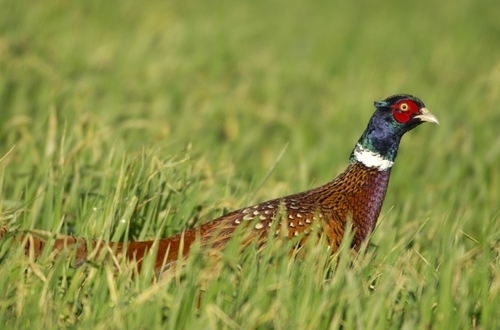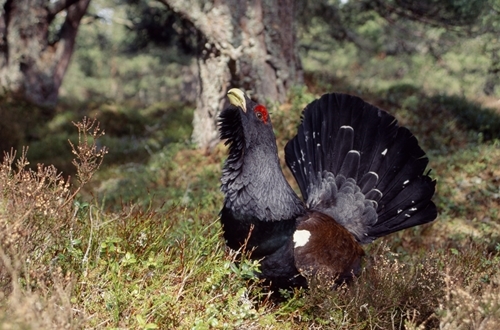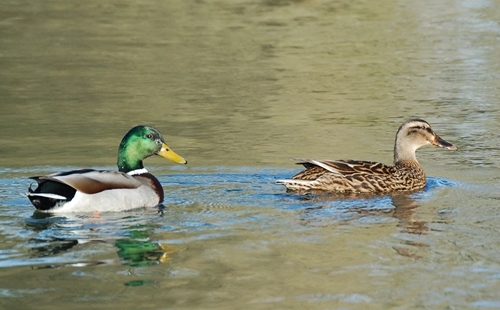4 Minute Read
By Mike Swan, GWCT Head of Education - This article first appeared in Shooting Times

Which of our various quarry birds is the most intelligent do you think? I’m not at all sure anyone really knows the answer, or indeed how it is that you assess this. You cannot sit them down and run an IQ test, not least because there are language barriers involved. However, it is also clear that some are sharper than others, and that they are not all equally bird brained.
Woodcock are one of my favourite quarry species, and the frequency with which one puts a holly bush or tree trunk between us as it flushes suggests that they are not that stupid. This is despite the fact that the French Becasse in its colloquial form means fool or simpleton rather than the bird itself. Strange to tell, this thought seemed so deeply ingrained in the French psyche that when I was there to study pollination four decades ago, my fellow scientists could not understand why I was so passionate about hunting for such a silly bird.
Woodcock have a very strong sense of place too, with wintering birds coming to the same wood, and feeding in the same fields at night, year after year. We must guess that the first migration is pre-programmed, because they come on their own without any parental guidance. After that they are surely clever enough to recognise where they were last winter, unless of course they have a built in GPS to the What Three Words standard.
Other birds show their intelligence in different ways. Pheasants, for example, seem silly in the way in which they will face a line of Guns. Even after they have seen action a dozen times, they will still fly straight and true for the home wood, facing the music yet again. Yes, a few will break back over the beaters, or skim out low to the side, but then one or two will have done this all season. Truth be told, this probably just becomes more obvious because the population has been thinned out, so the proportion going forward has lessened.

© Laurie Campbell
These same pheasants, living in a hedgerow or other linear cover will keep well ahead of a lone roughshooter quietly hunting with a dog, only flushing when the cover runs out. And, for each one that you catch out, several will probably have slunk off. Is it a sign of intelligence that these pheasants will come running to the sound of a keeper whistling as he scatters corn, or a quad and spinner running down a feed ride? One human activity spells danger and the other brings the reverse, and those birds are well able to sort which is which.
A week or so ago I was lucky in the extreme to enjoy some wonderful hill edge sport in Durham, where our bag included a few grouse as well as wild pheasants. At times those grouse would get up and go a quarter mile ahead of us, despite this being the first time they had been pursued this season. Is that a sign of cleverness, or just a basic instinct for self-preservation? On balance I think that they probably are that bit cleverer than the average pheasant, but I’m not sure there is much in it.
One thing is for sure though; grouse are far more likely to react to a flag waving beater than pheasants. Beaters can turn coveys that were planning to break out of the drive, and the flankers at either end of the butt line can steer birds very successfully. On the other hand, those beaters that are detailed to stand between flushing point and Guns to “flag up” the pheasants and try to lift them higher seem to me to have precious little effect. Likewise, the ones who are out at the side to try to turn them forwards; when a pheasant sets off it seems that it knows exactly where it is heading, and what trajectory gets it there, and it is not for changing its mind.
I don’t know enough about grouse, blackgame and capercaillie to offer any expert opinion, but overall, it seems to me that our ‘proper’ gamebirds are all probably of similar intelligence, if only because they are closely related species in taxonomic terms. That said I was impressed by speed of learning by wild grey partridges on my little Dorset rough shoot when I took it over twenty-five years ago.

© Laurie Campbell
Those partridges had never seen a feeder in their lives before when I put out some steel drum hoppers from a previous shoot. They were my standard 25 litre version, with slots in the base to peck at for a grain or two at a time. I set them knee high, for the pheasants to reach up to, but within three days I was seeing pairs of greys under them. Not only were they picking up spillage, but they had learned to jump up and peck at the slots, which I still think is very impressive.
Many people will claim that the humble woodpigeon is our cleverest quarry. It will certainly put distance between you and itself the moment it spots you skulking in your hide, or peering up from the woodland floor. Compared to gamebirds, which generally carry on with the same trajectory, a pigeon will also switch on the afterburners and rocket skywards if you miss first barrel.
On the other hand, if you use a pigeon magnet it will likely be attracted to the movement, despite the fact that the decoys are whirling around in an impossibly tight circle. That said, I have rarely known pigeons to land near a magnet; they seem to rumble that something is wrong, take fright and pull away if you do not shoot as soon as they are in range.
Which brings me on to wildfowl, where similar reactions can be expected. Of all the ducks, I think that the pintail is the wildest. On my beloved Medway you can watch them crossing the tideway at a reasonable height, but once the season is properly under way they will usually climb before crossing the marsh edge, especially if it is a piece of old sea wall where a fowler might hide at high tide. Even when part of a collection, pintail never seem to be so confiding as the other ducks – perhaps they are just suspicious by nature.

Mallard, on the other hand may be a bit cleverer. It is perhaps no accident that our ancestors found them the easiest to domesticate, for town park mallard are about as confiding as any bird gets. On the other hand, if they have seen a bit of action on the foreshore, they are very likely to be the first away as soon as they spot a wildfowler. This dichotomy of behaviour is surely a mark of intelligence, compared to the endless suspicion of other species.
I have a hunch that geese are cleverer still. A tame greylag will take corn from your hand, just like a barnyard goose, but proper wild ones will always be on the lookout for trouble. While it is a slight exaggeration that there is always a sentinel, a gaggle or even just a family group on the ground will nearly always include someone who is on lookout, and one muttered warning call means heads up all round. On the other hand, compared to ducks, which would be away just in case, the geese might well settle if nothing else bothers them, which seems the ultimate intelligent approach to me.
The Sharpest Bird on the Shore
They are now long gone as a quarry species, but during my wildfowling apprenticeship, I reckon that the curlew was the hardest bird to fool. The merest glimpse of the hidden wildfowler would cause alarm from way beyond shooting range, and if you blew a raspberry when trying to call them, they would rumble that too. Today, if there is nothing else in view, I sometimes amuse myself by trying to call them from deep in my hide, and then popping up when they are in range. Nine out of ten will flare in alarm as soon as they see me, presumably on the basis that I might just be dangerous, even though I am not.